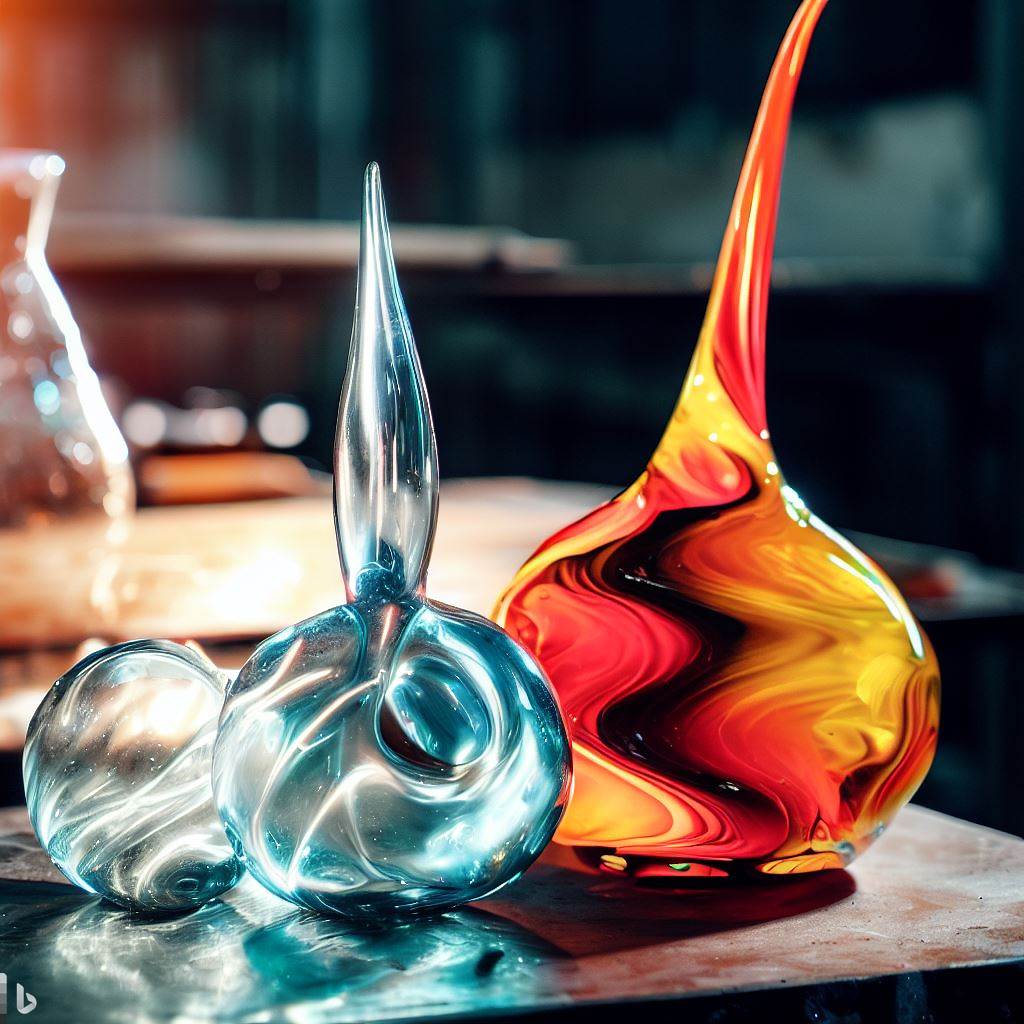The Alchemy of Molten Light: Essential Glassblowing Techniques and Processes
The meticulous craft of glassblowing relies on generations of refined techniques uniting science and artistry. Mastering the elaborate choreography between furnace heat, tools, and worked material allows artists to shape mesmerizing vessels, sculpture, and decorative objects from molten glass. Exploring these essential methods provides insight into glassblowing’s technical alchemy.
Achieving Working Heat in the Furnace
The furnace provides the essential high heat to melt and liquify glass raw ingredients into the ideal viscous state for blowing. Gas-powered furnaces sustain temperatures between 2,100-2,300°F through insulation and sensors to keep glass at the optimal fluidity for gathering onto blowpipes. Electric furnaces provide more precise thermal control for smaller studios. This preliminary heating transforms inert glass particles into glowing, malleable liquid light ready for artful manipulation.
Starting With the Molten Gather
The starting point for blown glass is the gather, which involves dipping the blowpipe into the furnace crucible to collect a molten blob of glass on the end. The texture and size of this gather determines possibilities for the piece based on the volume collected and its temperature. The gather gets rolled on a steel table to smooth it out in preparation for inflation. Proper gathers set up success for the entire blowing process.
Expanding Through Breath and Tools
Once affixed to the pipe, the hot glass gets blown into a preliminary shape through steady airflow and manipulation using wooden tools and wet newspaper pads. The artist rolls the pipe back and forth while blowing gently to form an evenly shaped starting bubble within the glass. Further blowing expands the volume into spheres, cylinders, and other forms which tools mold and refine through paddling and pulling motions. This elegant dance between breath, heat, and tools creates the basic vessel shape.
Adding Color Through Molten Injection
To introduce color, artists gather additional rods and fragments of molten colored glass from the furnace which get rolled onto the clear gather during shaping. Fine strings of color can be trailed into the piece by dragging colored glass along the surface. Intricate patterns form through layering and blending these color additions using expert timing. Vibrant colors come alive through fusion with the crystallizing hot glass.
Transferring to Punty for Detailing
For additional modifications, the glass gets transferred from the blowpipe to a solid punty rod in order to access the interior space. A vessel’s lip gets rolled for smoothness and the bottom is refined using gravity and heat. Handles, stems, and decorative flourishes get applied gently at this stage while the glass remains malleable. The punty provides stability for final embellishments.
Slow Cooling in the Annealing Oven
After blowing, glass contains unstable internal stresses that require careful annealing. The vessels slowly cool to room temperature in a programmable oven over 12-24 hours to release pent-up energies that cause fractures. Delicate glass structures remain intact without cracking when cooled gradually through this tempering. Proper annealing grants glass art its clarity and durability.
Alchemy of Human Breath and Fire
Through each step from gathering molten light to cooling pristine clarity, glassblowers unite science, skill, and artistry to manifest wondrous utility and beauty through this unlikely medium. Mastering the choreography of heat and breath to generate luminous forms retains an air of sorcery and wonder, even as contemporary artists push the technical boundaries further.
